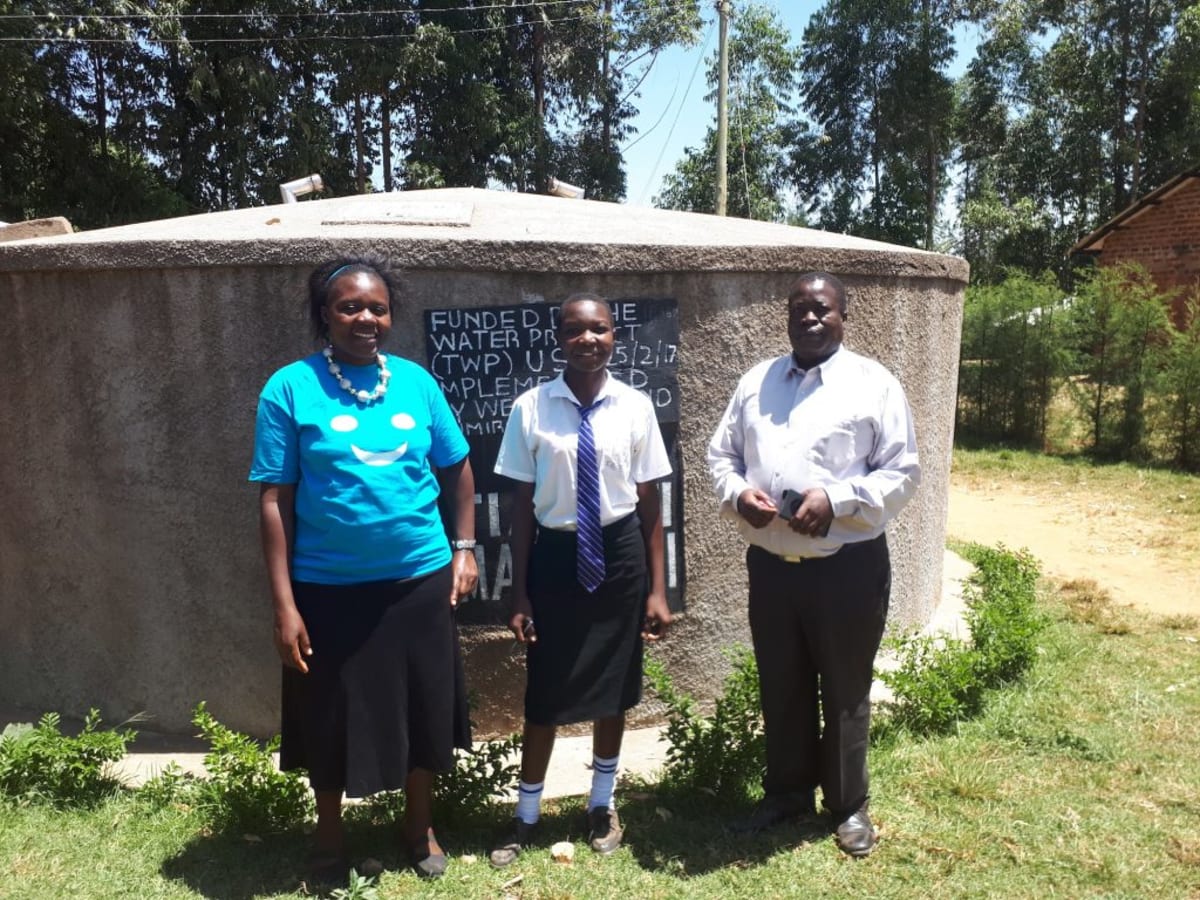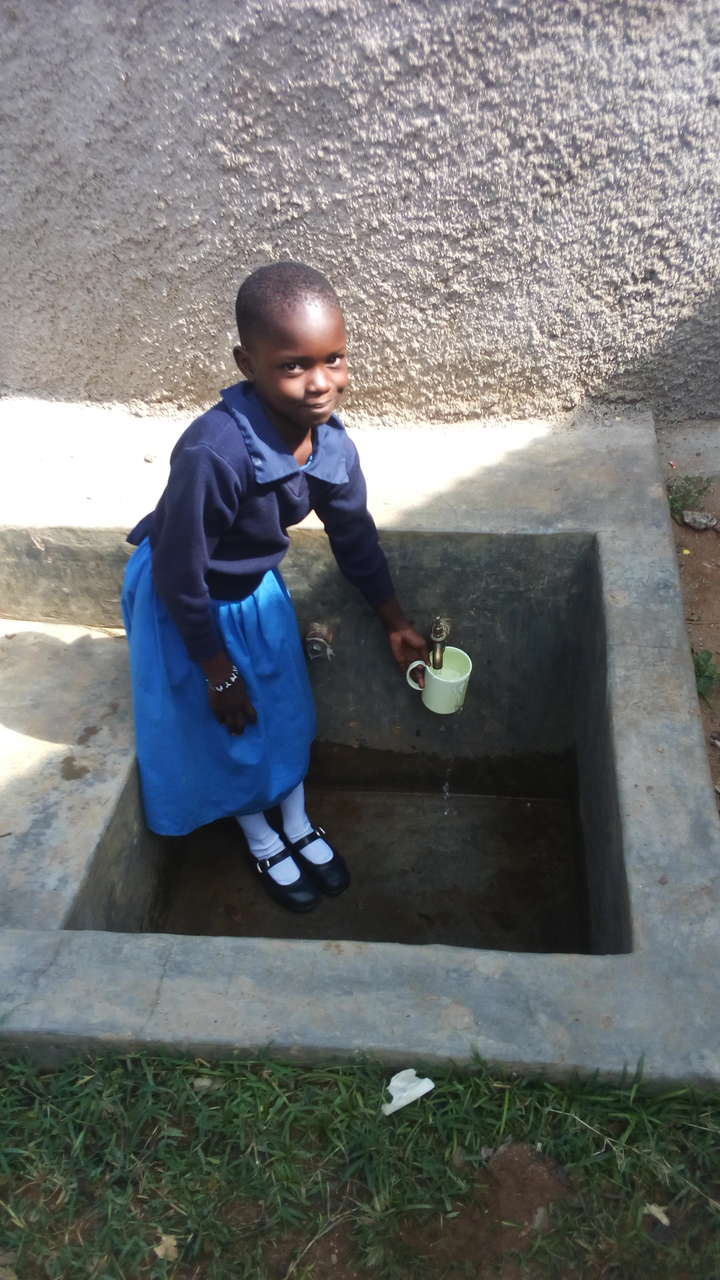This project is a part of our shared program with Western Water And Sanitation Forum (WEWASAFO). Our team is pleased to directly share the below report (edited for clarity, as needed).
Welcome to the School
Bumini Primary School was established in 1919 by the Maryhill Missionaries. It is the oldest school in Mumias East Sub-County, and started with a student population of only 20.
It is now sponsored by St. Luke’s Catholic Church and has 1200 primary pupils and 165 early education pupils. The school employs a total of 27 teachers and six support staff. The school’s motto is "hard work pays."
(Editor's Note: While this many people may have access on any given day, realistically a single water source can only support a population of 350-500 people. This community would be a good candidate for a second project in the future so adequate water is available. To learn more, click here.)
On a normal school day, pupils arrive at 7am. They carry out normal cleaning activities and then proceed to the morning assembly at 7:30am, when they listen to announcements from staff. Morning classes start at 8am and go until lunch at 12:30pm, when students return home to enjoy a meal with the rest of their family. Afternoon classes begin at 1:45pm and then there's game time and evening assembly before students are dismissed at 4:30pm.
Water Situation
The pupils are required to carry water from their respective homes, but the five to 10 liters they carry is not enough for their daily use. Thus, the students are sent out to fetch water from a spring about one kilometer away. This water shortage greatly interferes with their class time. Once the water in their small containers is used up, out they go again.
The safety of water that students fetch cannot be guaranteed, especially after the long trek back with their open containers. After drinking, there are complaints of stomachaches and diarrhea, two primary symptoms of typhoid.
Sanitation Situation
Bumini Primary School has a total of 20 VIP latrines out of which four are for teachers and visitors and the other 16 are for pupils. The 16 are split equally between boys and girls. The latrines are not nearly enough for over 1,000 students and this shortage has resulted in long lines and wasted time. And because there's a water shortage here, a handful of these latrines cannot be cleaned on a regular basis.
A good number of wooden latrine doors are infested by termites, whereas other doors have completely broken off. There is only one hand-washing station for all of these students and staff, making it impossible for everyone to wash their hands after using the latrine.
Plans: Hygiene and Sanitation Training and Hand-Washing Stations
Training will be held for two days. The facilitator will use PHAST (participatory hygiene and sanitation transformation), ABCD (asset-based community development), CTC (child to child), lectures, group discussions, and handouts to teach health topics and ways to promote good practices within the school. The CTC method will prepare students to lead other students into healthy habits, as well as kickstart a CTC club for the school. This CTC club will oversee the new facilities, such as hand-washing stations, and make sure they are kept clean and in working condition. The two hand-washing stations will be delivered to the school, and the club will fill them with water on a daily basis and make sure there is always a cleaning agent such as soap or ash.
Plans: VIP Latrines
Two triple-door latrines will be constructed with local materials that the school will help gather. Three doors will serve the girls while the other three serve the boys. And with a new source of water on school grounds, students and staff should have enough to keep these new latrines clean.
Plans: Rainwater Catchment Tank
A 50,000-liter rainwater catchment tank will help alleviate the water crisis at this school. The school will also help gather the needed materials such as sand, rocks, and water from the spring for mixing cement (students have already started helping). Once finished, this tank can begin catching rainfall that will be used by the school’s students and staff. Students will no longer be responsible to find enough water to carry to school every day.
We and the school strongly believe that with this assistance, standards will significantly improve. These higher standards will translate to better academic performance!

 Rainwater Catchment
Rainwater Catchment
 Rehabilitation Project
Rehabilitation Project
































